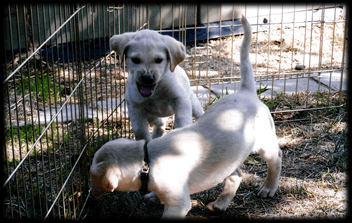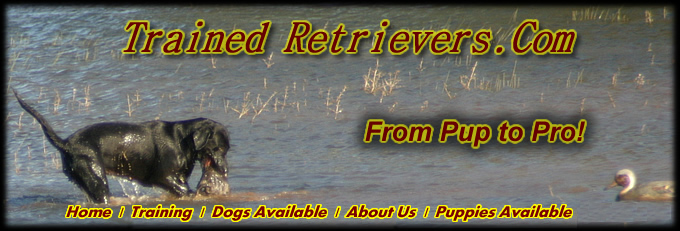
The introduction to formal commands begins building on what the dog already has learned, SIT- STAY, and moves into, PLACE/SIT for example.
We start the dog on commands he/she will need to build on to advance. Teaching to place prepares him/her for the more advanced OVER and BACK commands.
Advanced Training
Almost any pup will fetch and hold by now. That is, as long as they are having fun. Then they have to be taught to hold until allowed to release to hand. This is called forced fetch or controlled retrieve.
SO, if you are looking for a trained Labrador that will stop when you tell it to, heal when told, come when told, go left, go right, go back when told, release to hand without dropping your bird, go to place, hunt from a dog blind, retrieve doubles, ride your quad, (not drive), and love you to death - THAT'S What We Do!
Personal experience: My hunting partner and I got a double on ducks so he sent his dog after his duck and I sent Rose after mine. My partner's dog, being a lot larger dog and untrained, followed Rose to her bird and was first to get to the bird. Rose let the other dog have the bird and both started back to the blind. When both dogs were in line with the second downed duck, I gave Rose a "sit" command. After the other dog cleared the area I gave Rose a "right over". She obeyed without question and after about 10 yards, she saw the second bird and retrieved it happily. She was a long way from being a finished Field Trial dog but I couldn't have been more proud of my girl.
Our pups are raised to be LOVING SOCIABLE BOYS AND GIRLS

Some take longer than others!



